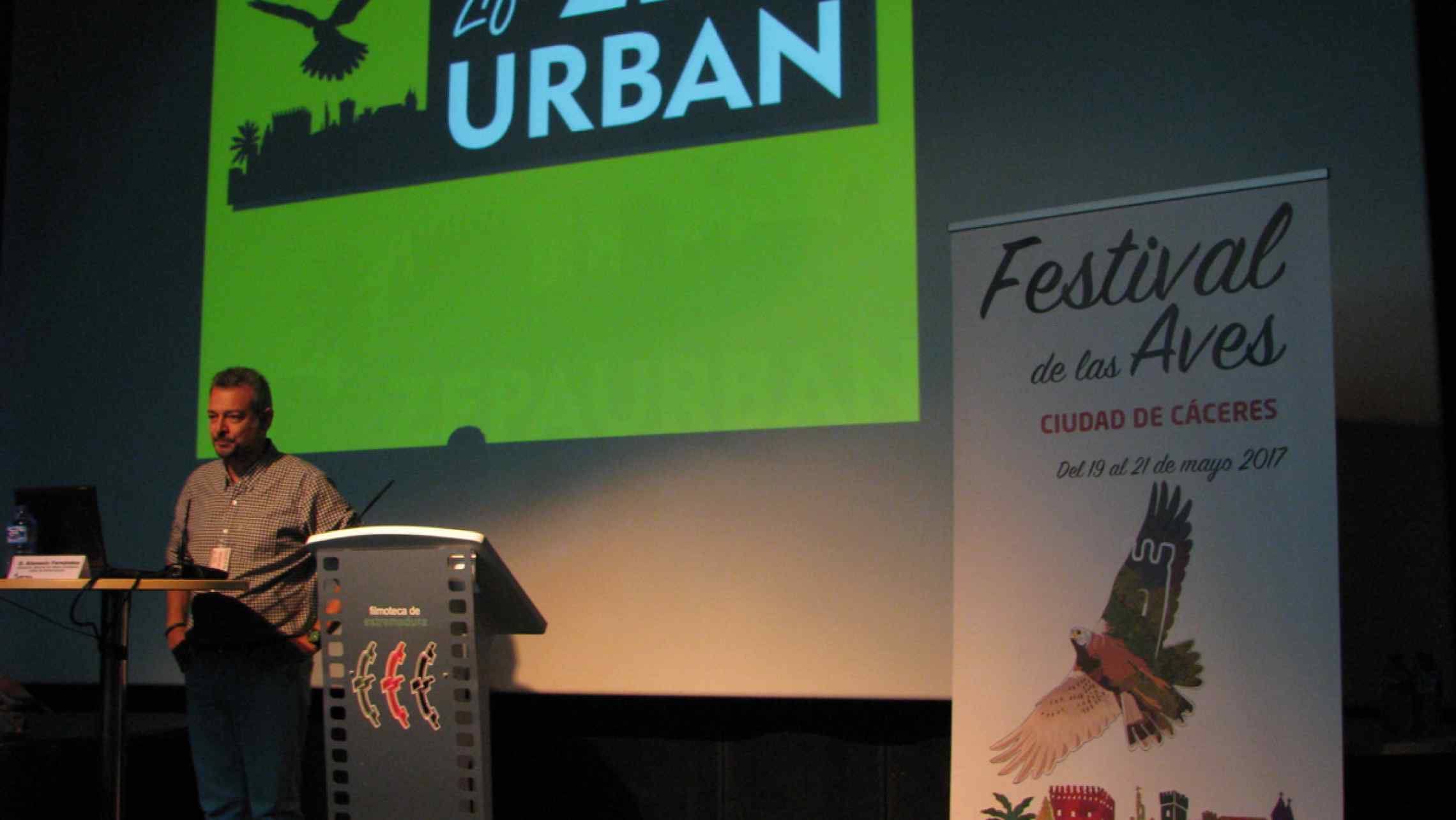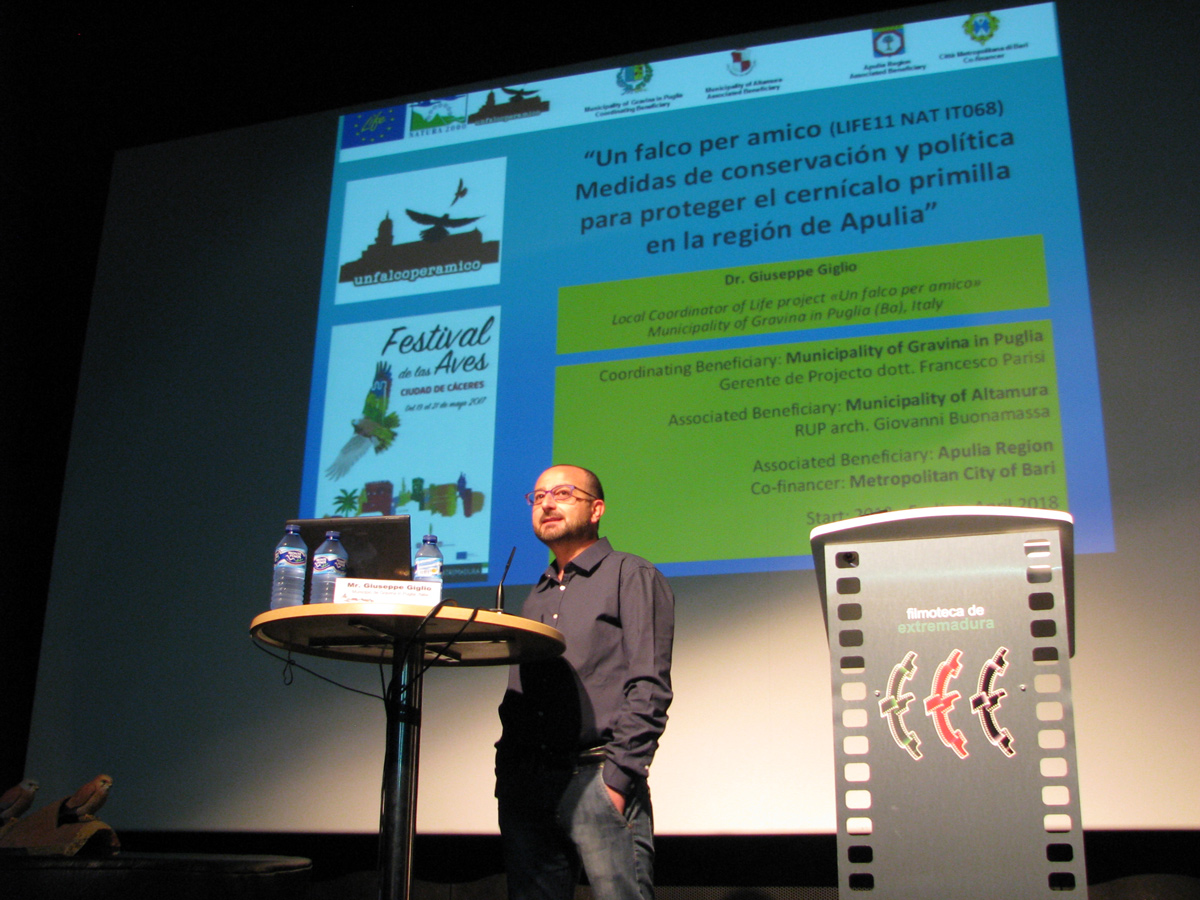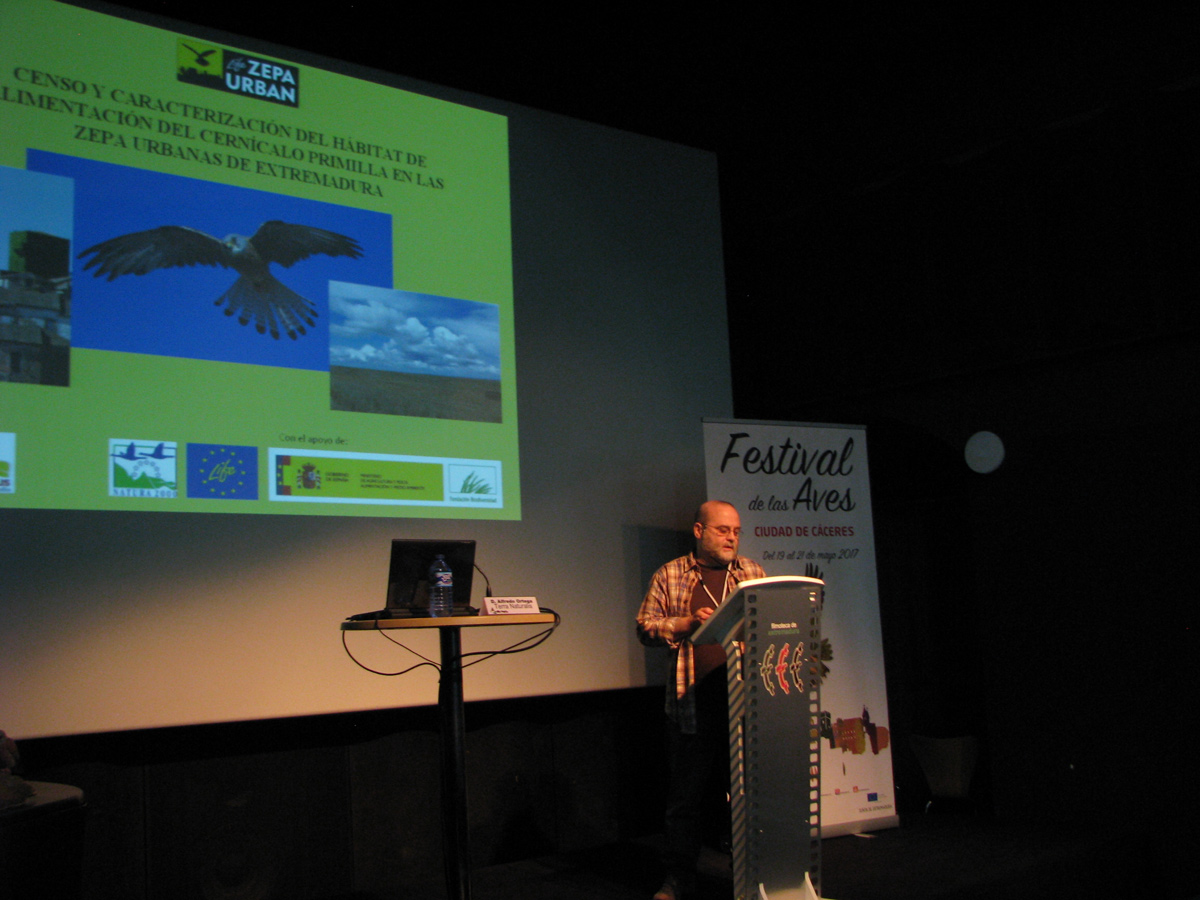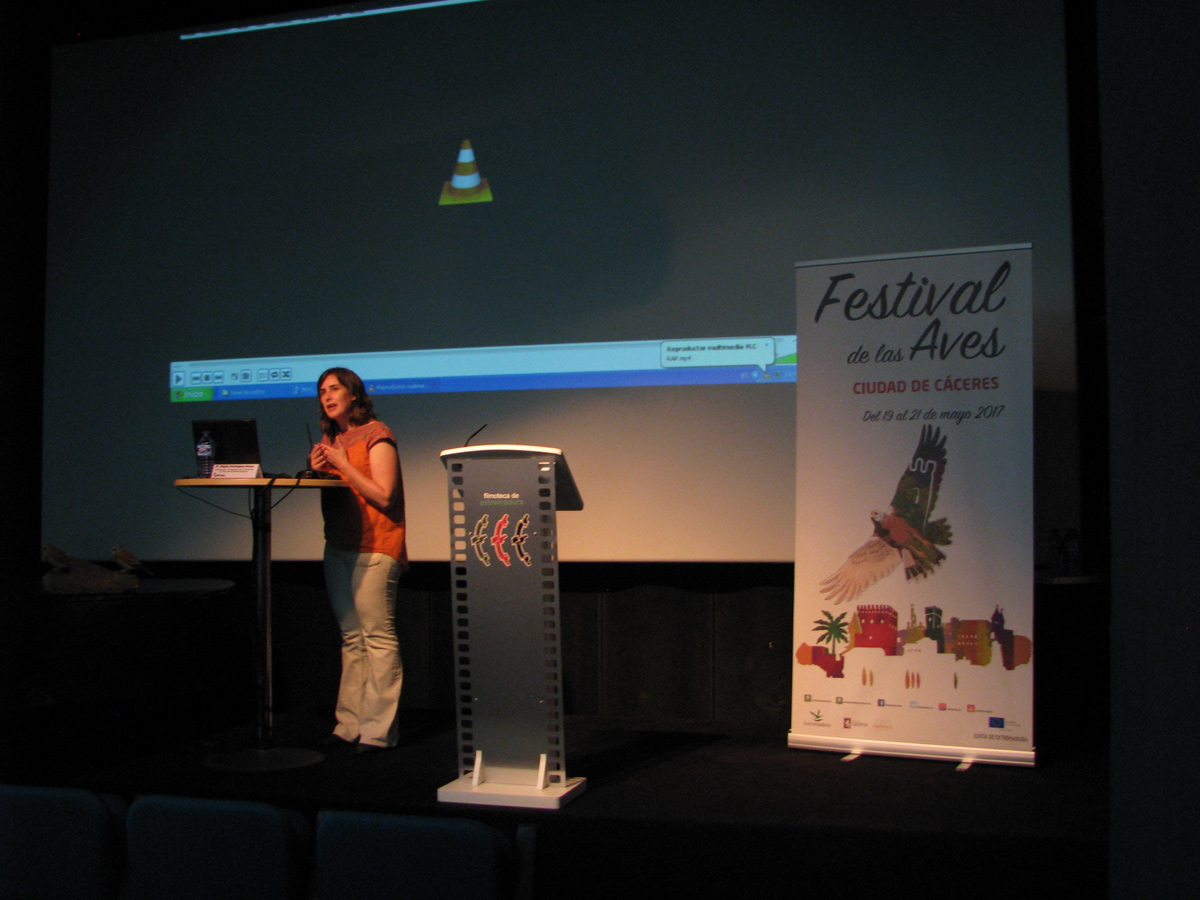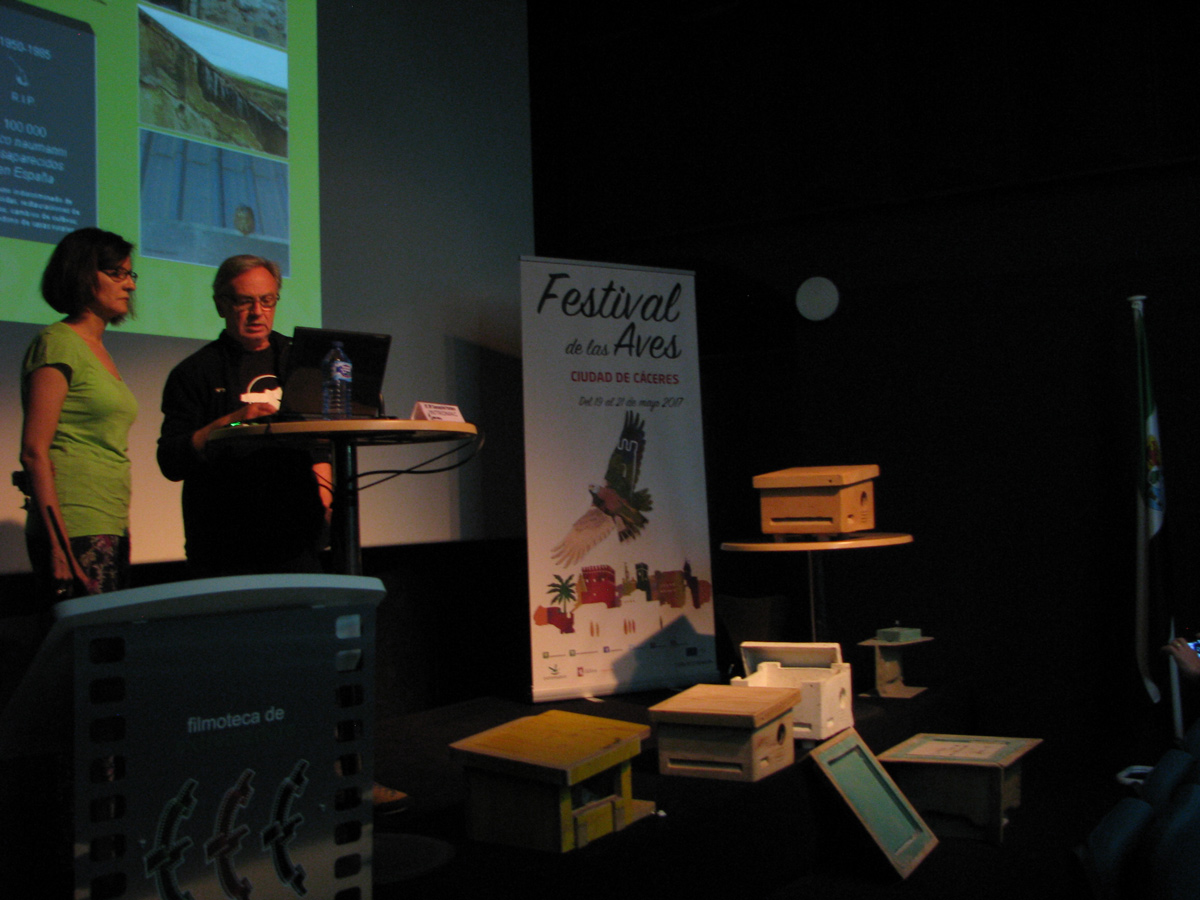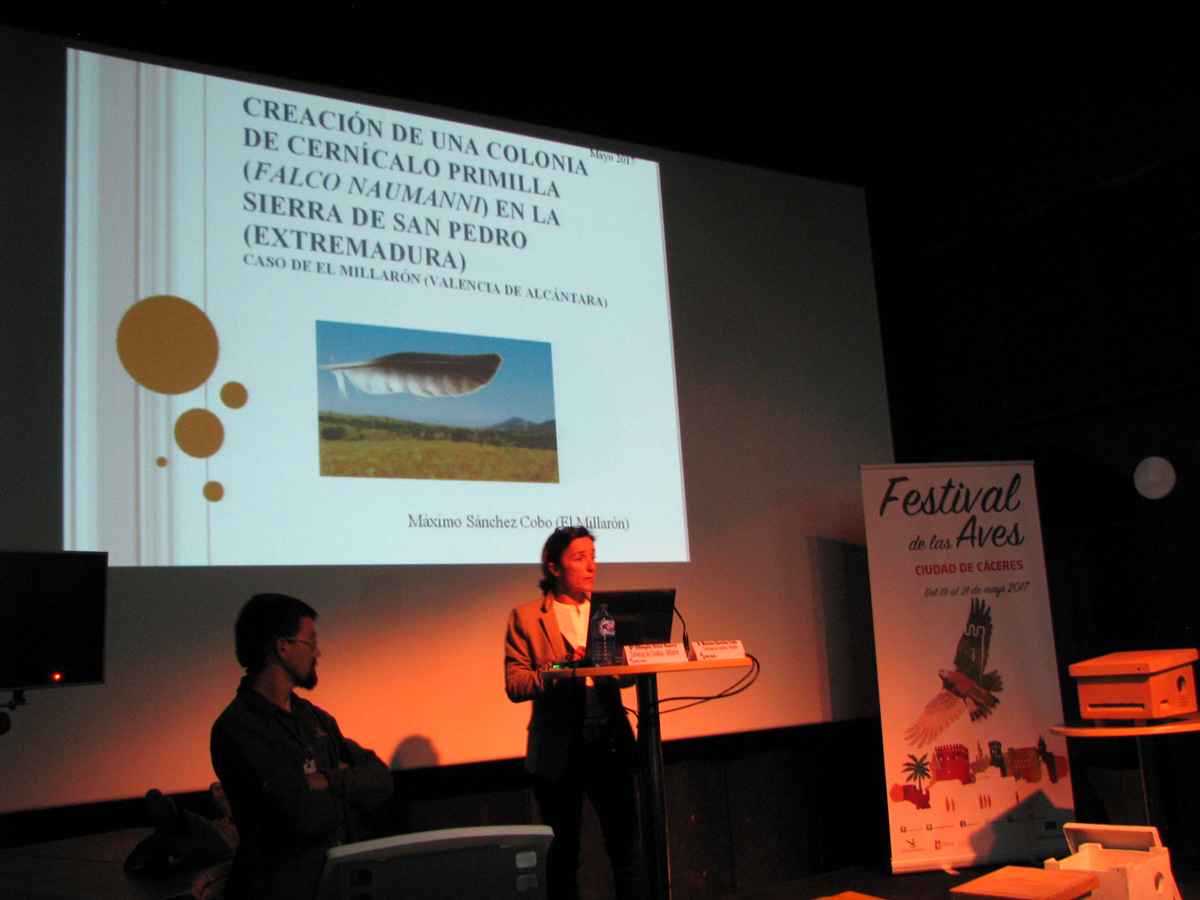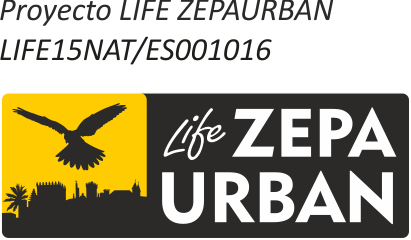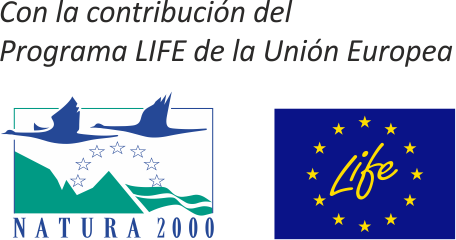The Ministry of the Economy and Infrastructures of the Regional Government of Extremadura has organised the "City of Cáceres" Bird Festival to be held in the Historic City Centre of Cáceres, one of the urban ZEPAs of Extremadura. The activities of the Bird Festival include in particular the congress entitled “Urban ZEPAs: conservation and tourism”, which has given special importance in its fifth edition to the LIFE-ZEPAURBAN project. During the congress we had the opportunity to get to know the LIFE project “Un Falco per Amico” (A Falcon for a Friend) which has multiple synergies with the LIFE-ZEPAURBAN project, thanks to Giuseppe Giglio who had come from Italy to take part in the Festival. Another outstanding element was the exhibition of Olimpia Oriol Ibarra and Máximo Sánchez Cobo on the work to recover the lesser kestrel on the Casillas-Millarón estate at the Sierra de San Pedro Area of Regional Interest.
Several partners of the project took part in this congress and revealed some of their main actions. Likewise, during the congress the Director of the project Atanasio Fernández gave a talk to present the LIFE project and its main objectives and actions. We also learnt from Alfredo Ortega of the Terra Naturalis association the preliminary results of the lesser kestrel census in urban ZEPAs in 2017 and the progress in the analysis of the use of the bird's feeding habitat in the area of activity of the LIFE project. Regina Domínguez, an expert from the State Tourist Office, presented the work her entity is carrying out to promote the lesser kestrel and enhance its value as a tourist resource in the form of a pilot project in five urban ZEPAs.
The presentation of the new nest box developed by DEMA, INTROMAC, and Prefabricados Extremadura 2002 was however one of the talks that aroused most interest as it constituted one of the first visible results of the project. In designing the nest boxes the ethological requirements of the species have been taken into account so as to minimise the risks of predation and the falling of chicks, and the ventilation and the systems for removing material from the nest and rainwater have been improved. In the manufacture of these nest boxes an innovative cement mortar with granulated cork has been used, which it is a light, resistant, durable, breathable, thermally insulating, and sustainable material. It is also crucial that the new design is not only lighter and more resistant and ethologically adapted to the species but has also been designed for industrial manufacture, which will make it cheaper than the nest boxes currently on the market.
From the LIFE-ZEPAURBAN project we would like to thank the State Tourism Office for the facilities it provided to disseminate the LIFE-ZEPAURBAN project as part of the City of Cáceres Bird Festival.
